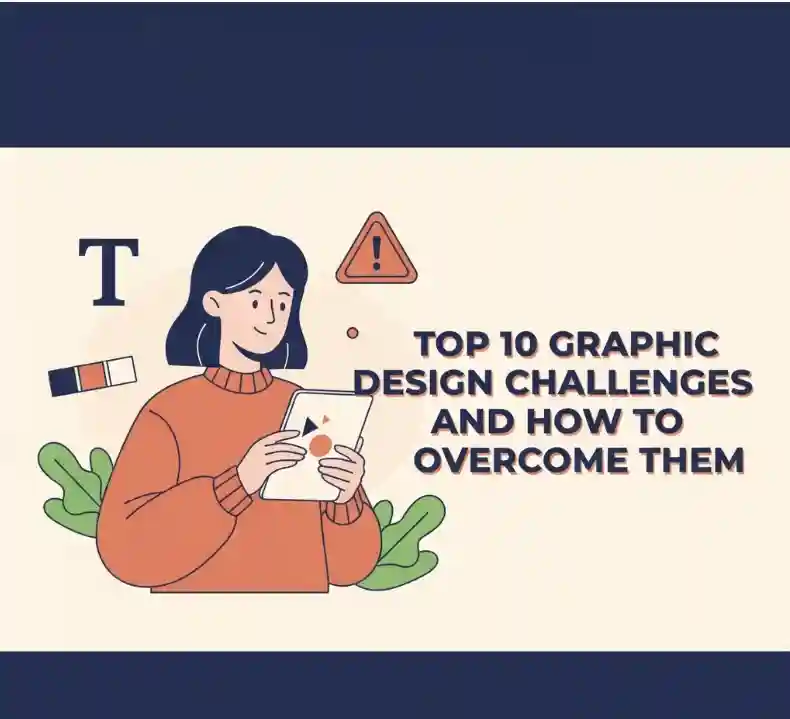Table of Contents
- Keeping Up with Design Trends
- Managing Tight Deadlines
- Finding the Right Fonts
- Communicating with Clients
- Maintaining Creativity Under Pressure
- Balancing Art and Function
- Handling Revisions Gracefully
- Designing flatforms
- Avoiding Burnout
- Building a Consistent Brand Identity
Introduction

In the ever-evolving world of design, every graphic designer faces unique challenges. From managing time to staying inspired, these struggles can either hold you back or push your creativity forward. Let’s explore the Top 10 Graphic Design Challenges and practical ways to overcome them — with a few tools and font recommendations from RaisProject.com to make your creative journey smoother.
1. Keeping Up with Design Trends
Trends change faster than ever — from minimalism to Y2K aesthetics. To stay relevant:
- Follow design communities like Behance and Dribbble.
- Subscribe to design newsletters.
- Keep an updated mood board.
2. Managing Tight Deadlines
Designers often juggle multiple projects with limited time. Use project management tools such as Trello or Asana and plan milestones for each task.
Font tip: Use readable, modern typefaces like Sans Serif Fonts for fast, clean designs.
3. Finding the Right Fonts
Typography defines your message. The challenge? Choosing fonts that balance personality and clarity.
- Combine a display font for headings with a sans serif for body text.
Try Rodger Arnoud Font for bold branding.

4. Communicating with Clients
Miscommunication can derail projects. Always confirm briefs with written documentation and visuals.
Tip: Use visual mockups and prototypes via Figma or Adobe XD to avoid confusion.
5. Maintaining Creativity Under Pressure
Creative blocks happen, especially with repetitive work.
- Step away for a while.
- Explore new styles or tools.
Fonts can inspire creativity — try Dariena Floralie Font for elegant, hand-drawn projects.
6. Balancing Art and Function
Designs should be both aesthetic and practical. Avoid overcomplicating visuals — ensure readability and usability.
can combine beauty and impact for branding or sports designs.
7. Handling Revisions Gracefully
Revisions are part of the job. Keep calm, communicate clearly, and manage feedback professionally. A structured feedback process can reduce stress and protect your creative integrity.

8. Designing flatforms
From social media to print, each platform requires different specs.
- Use responsive layouts.
- Test colors and readability across devices.
Try versatile fonts like Legend Hunter Font for adaptable designs.
9. Avoiding Burnout
Creative burnout is real. Set work boundaries and take breaks.
Use automation tools or templates to speed up repetitive tasks.
10. Building a Consistent Brand Identity
Consistency builds recognition. Create a brand style guide — color palette, typography, imagery, and voice.
Fonts play a major role. Try a strong duo like Font Duo Collection to maintain harmony between headline and subtext.
Conclusion
Being a designer means solving problems creatively every day. The key is adaptability — learning, experimenting, and using the right tools, especially typography.
At RaisProject.com, we craft handcrafted fonts that empower designers to express ideas with confidence and creativity. Explore our full collection to find your next perfect typeface for any project.
